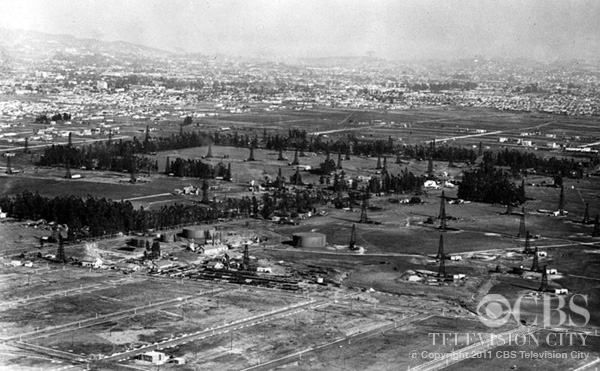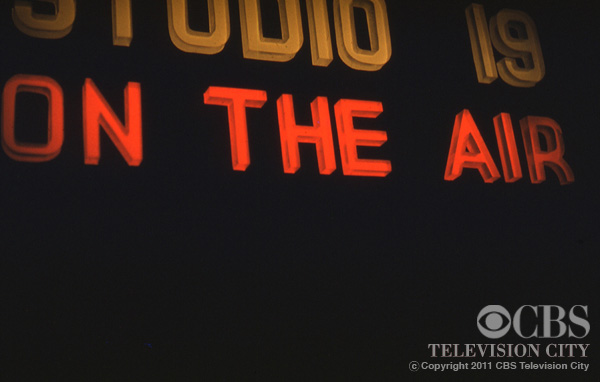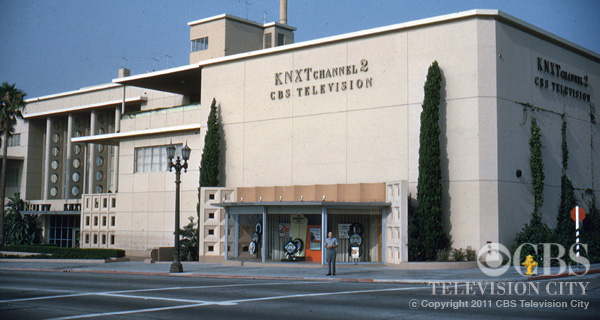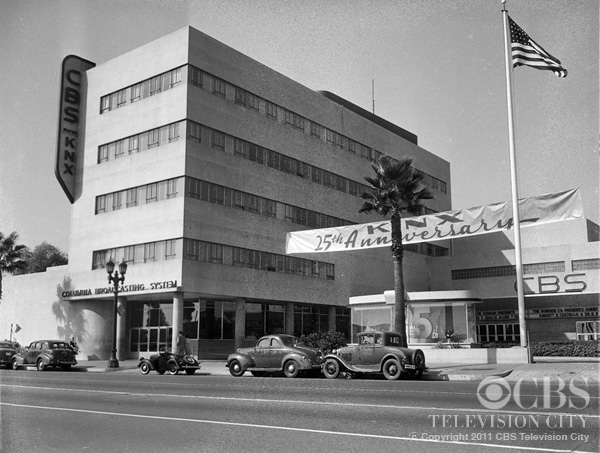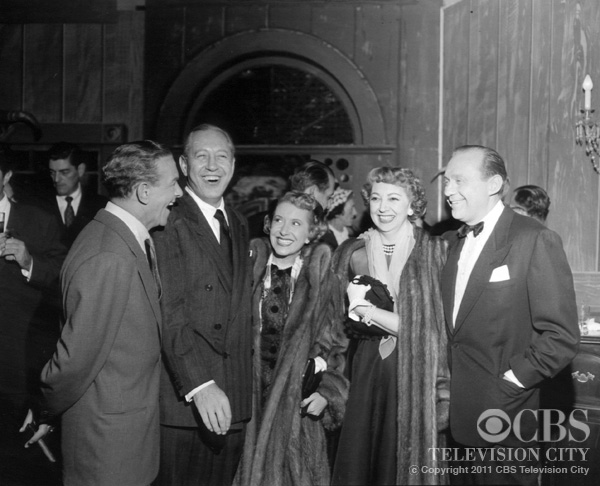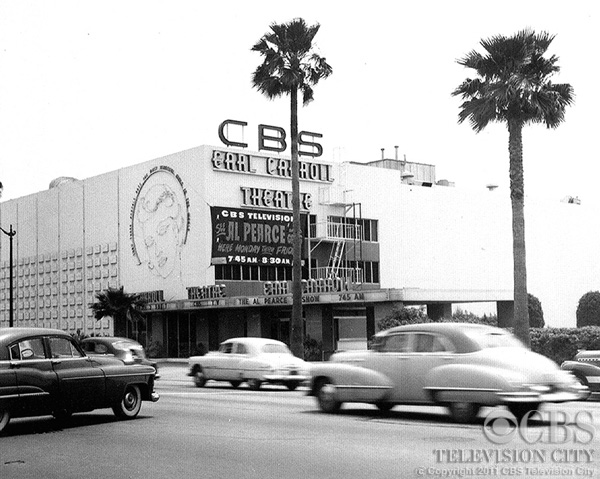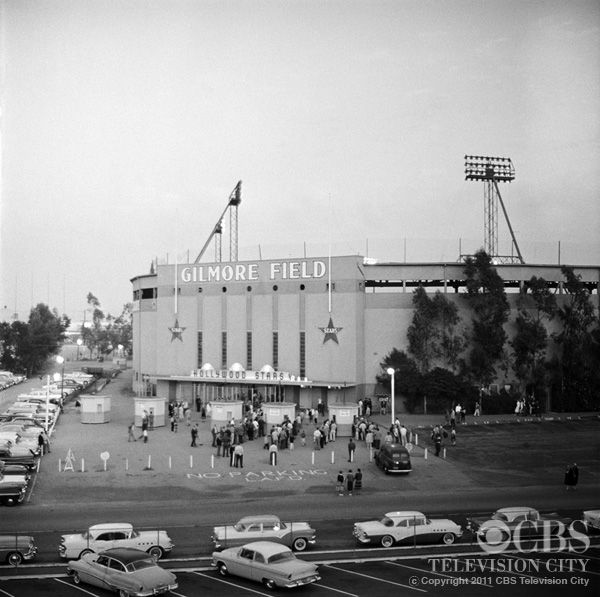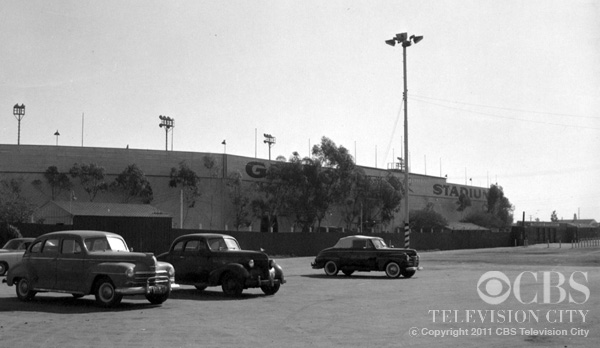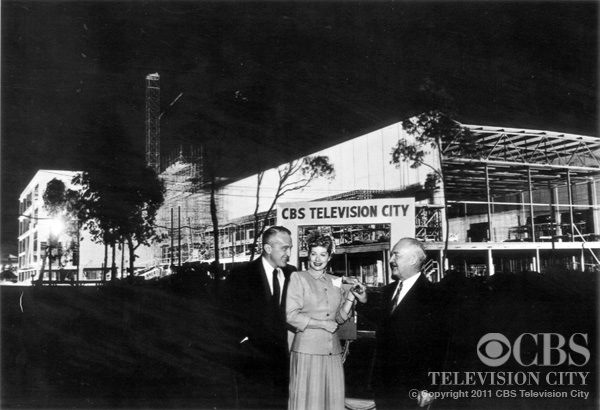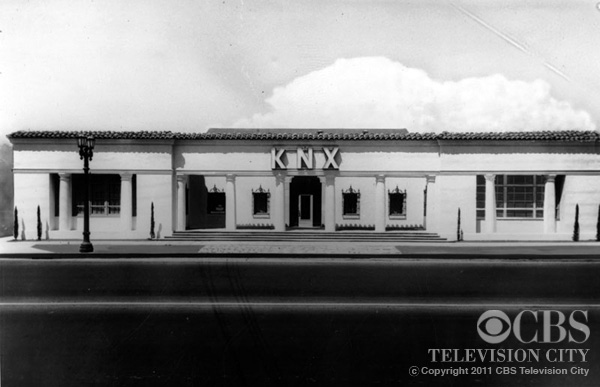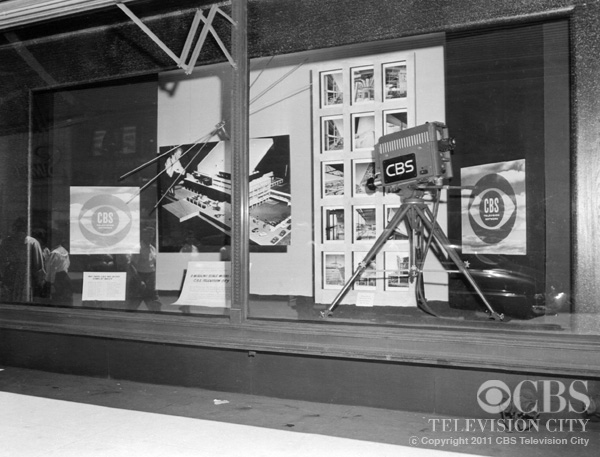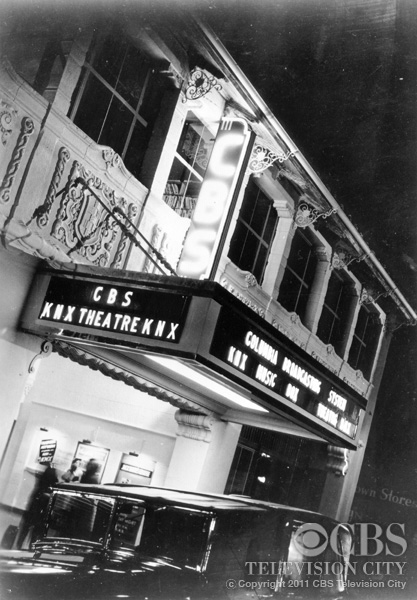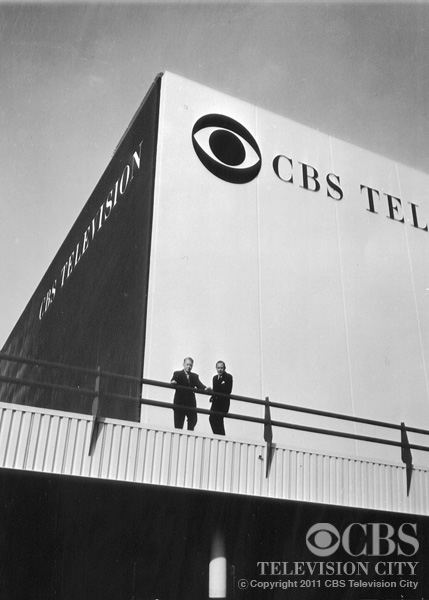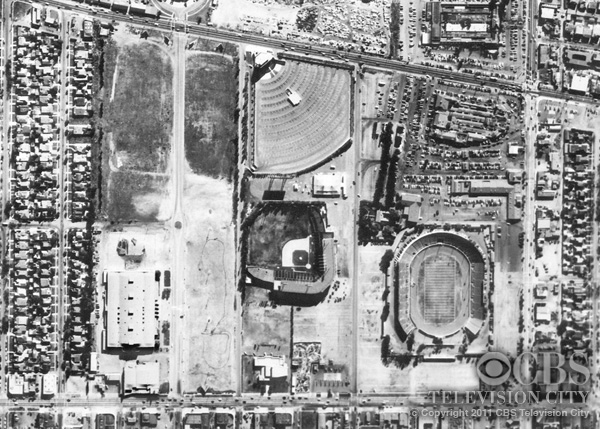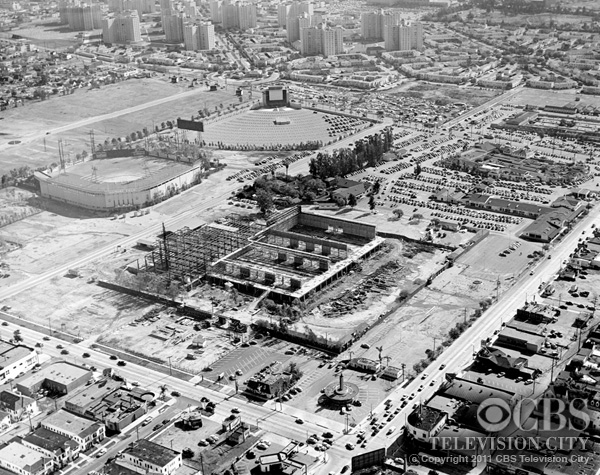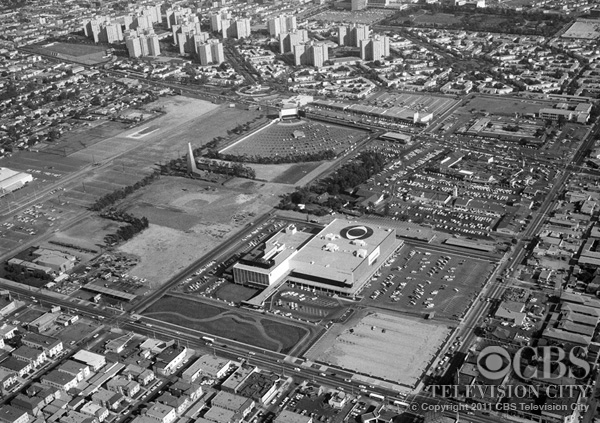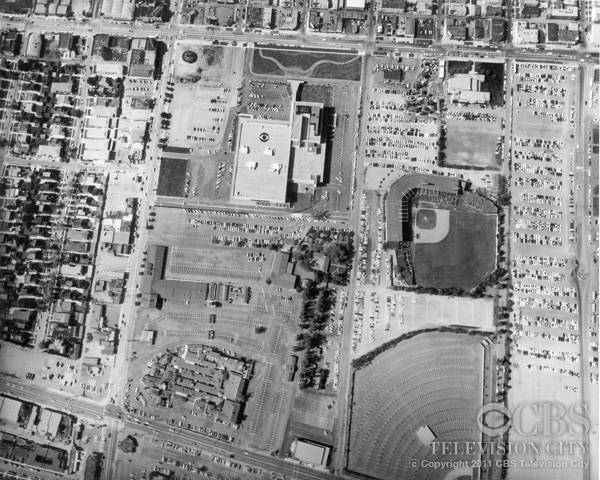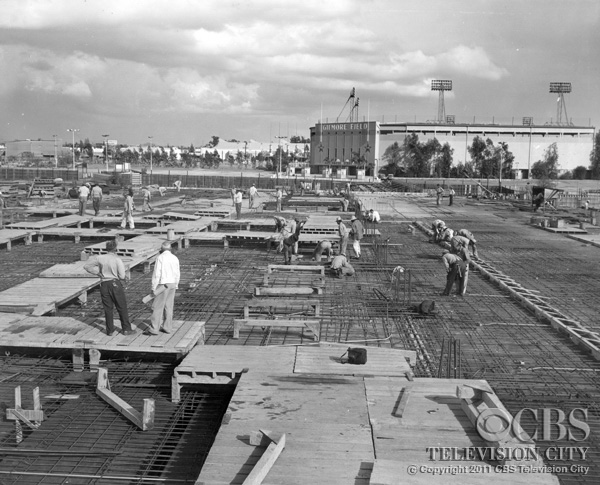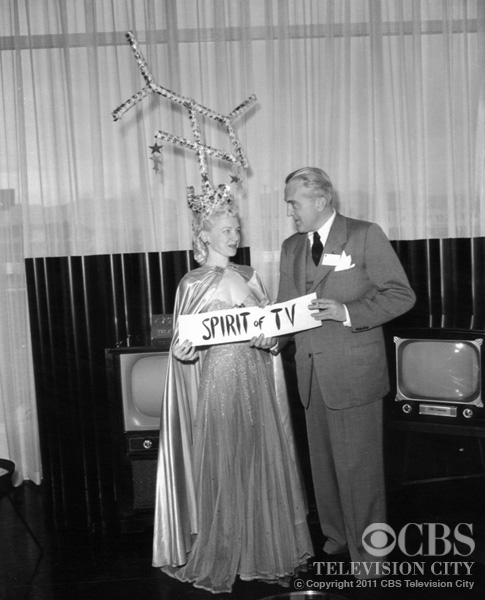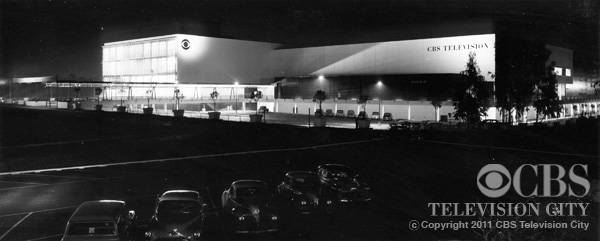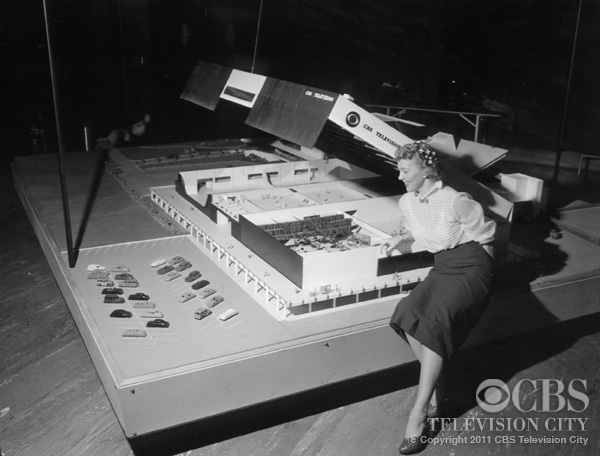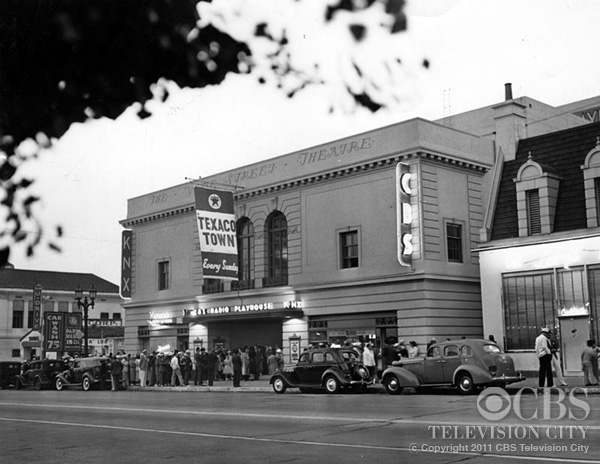Television City opened on November 16, 1952. It was built on the site of a former football field and race track, Gilmore Stadium. Before the stadium, it was an oil field.
Gilmore Stadium was part of a sports/entertainment complex that included Gilmore Field and the Pan Pacific Auditorium. The stadiums and auditorium were built on what was once 287 acres (1.16 km2) unincorporated known as Gilmore Island, and the fortune that led to their construction had origins similar to a television sitcom plot.
Arthur Fremont Gilmore brought his family to Los Angeles from Illinois in 1874, started a dairy business and eventually made enough money to buy part of Rancho La Brea, roughly bounded by Beverly Boulevard, 3rd Street, and Fairfax and La Brea Avenues. By the late 1930s, the Gilmore company had built both the football stadium and the baseball park. Gilmore sold the stadium to CBS in 1950, and that year’s Turkey Night Grand Prix midget race (now held at Irwindale Speedway) was the last race run on its track. Two years later, CBS built Television City on the site. After the Hollywood Stars transferred out of the city in 1958, the ballpark was razed and that property also became part of the Television City complex.
The stark modern architecture at Television City consists of black and white planes meeting at razor-sharp corners, with accents of dazzling red, the work of Pereira & Luckman of Los Angeles. The studio facility was built to handle the larger production needs for the network, most of which took place at the rather cramped Columbia Square. The building’s black and white color scheme was also used to identify areas where it was designed to be expanded. Black walls and glass walls indicated “temporary” structure that could be removed during expansion, while white areas were “permanent”.[3]
The building initially held four soundstages (Studios 31, 33, 41, and 43), but a renovation in the late 1980s added two new soundstages to the east of the original building (Studios 36 and 46), plus additional office/storage space and technical facilities. Later, another renovation further added two more studios (Studios 56 and 58) in what had been rehearsal halls in the original building. The original plans for Television City called for 24 soundstages, before CBS executives deciding to settle with just the initial four.
Studio 43 was equipped with RCA TK-40A color cameras in 1954, with cables allowing any of the original four studios to use those cameras. In 1956, Studio 41 was equipped with RCA TK-41s. However, color broadcasts decreased in frequency until the following decade, when the 1964 production of Rodgers and Hammerstein’s Cinderella was recorded. Television City programs were, in general, in black-and-white until Norelco PC-60s were installed starting in 1964.[4]
Studio 33 is the current home of the long-running game show The Price Is Right and the HBO late-night series Real Time with Bill Maher. This soundstage was also the home of The Carol Burnett Show for its entire 1967-1978 run, and The Red Skelton Show prior to that (1953–1970), as well as the notable game shows Match Game (the 1973-82 Gene Rayburn-hosted version, and the 1998 version), The $25,000/$100,000 Pyramid (the 1980s run), Hollywood Squares (hosted by Tom Bergeron), Wheel of Fortune, the 1986-1989 revival of Card Sharks, and the 1988-1995 run of Family Feud. On April 9, 1998, on the 5000th episode of The Price Is Right (actually number 5133), named Studio 33 as the Bob Barker Studio in honor of the show’s longtime host and executive producer.
When it became standard for sitcoms to tape in front of a studio audience in the 1970s, many shows were recorded on soundstages at Television City, such as All in the Family, Maude, and Good Times. The ABC sitcoms Three’s Company and Welcome Back, Kotter were also taped at Television City.
Television City is also home to Digital visual effects studio, and the music label. “Television City” is a registered trademark of CBS for its TV production facilities.





